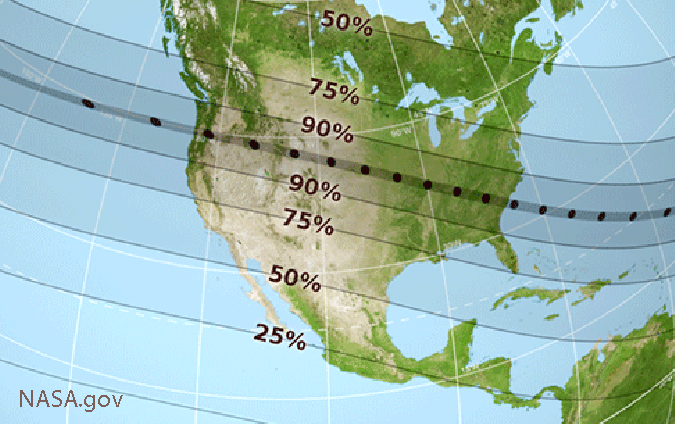One of the most exciting astronomical events in a long while will sweep across the sky today.
We’re hosting some live streams from NASA and The New York Times here (no safety glasses or sun funnels necessary.)
Here’s the Times live stream:
Here is NASA’s official live stream:
It’s the first time in 38 years the United States will experience a total solar eclipse. Unfortunately, all of us here in Orange County will only experience a partial eclipse, as about 60 to 65 percent of the sun will be obscured by the moon at the peak of the event.

Still, two-thirds of an eclipse is two-thirds more than most of us have seen in a long time, or ever, right?
Educators across the nation will use the event to help spark students’ interest in science, showing how the moon rotates around our planet, and how Earth rotates around the sun. Here’s an EdSource article about how teachers statewide will use the eclipse as a classroom learning activity.

NASA, the American Astronomical Society and the National Science Teachers Association have put together information charts, tip sheets and other material to help teachers and the rest of us watch the eclipse safely.
Of course, the No. 1 safety tip remains: NEVER look directly at the sun without approved safety glasses or other viewing devices, even during an eclipse. (Experts say the only time it’s safe to look at the sun without protective eyewear is the couple minutes when the moon completely covers the entire disk of the sun. But this will NOT occur in California on Monday.)
NASA has provided to science museums across the country special viewing glasses that meet all the safety standards for eclipse watching. These glasses have 100 percent ultra-violet protection and block out 99.99 percent of light from the sun. The chart below offers specifications other glasses must meet in order the be considered safe.

The American Astronomical Society has a list of other safe eclipse glasses.
Here is some other information to help you enjoy the eclipse:
- In the greater Los Angeles area, the eclipse will begin at 9:06 a.m., with the peak at 10:21 a.m. and the conclusion at 11:45 a.m.
- The eclipse in this region will make it appear like an autumn dusk.
- You can watch online a live stream of the full eclipse on NASA’s web site.
- Always supervise children using solar filters.
- If you normally wear eyeglasses, keep them on. Put your eclipse glasses on over them, or hold your handheld viewer in front of them.
- Do not look at the uneclipsed or partially eclipsed sun through an unfiltered camera, telescope, binoculars or other optical device.
Discovery Cube Orange County also has some videos with guidelines for building cardboard eclipse viewers, along with other information.
